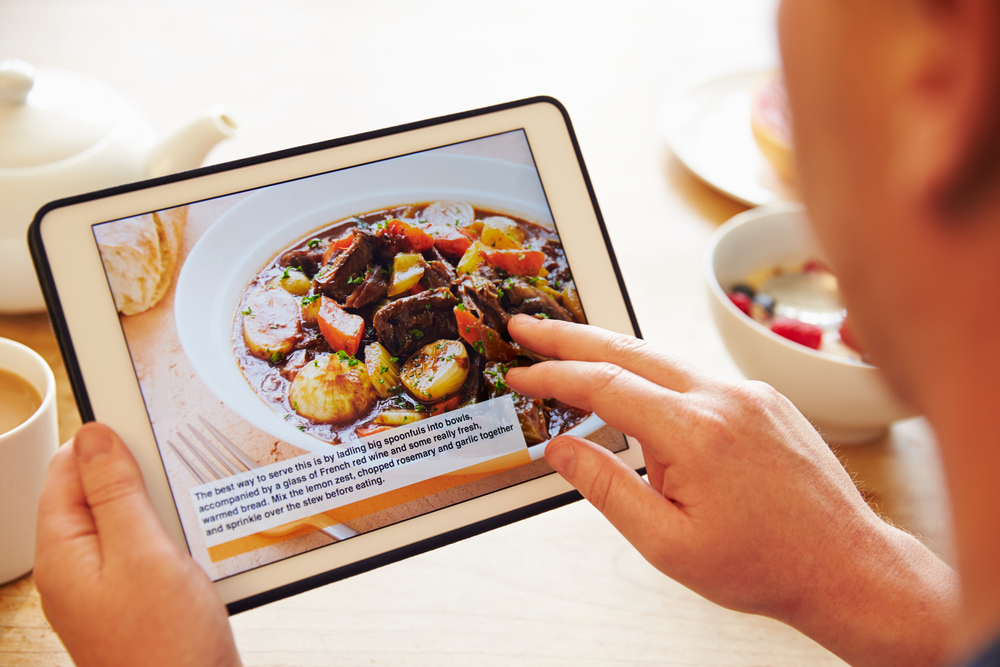 A great way to work towards your New Year's health resolutions is to incorporate a few or all of these quick routines into your morning regimen. Each one takes just 20 minutes or less and can make a huge impact on how your body performs throughout the day. So, what are you waiting for? Start feeling your best today and all year long with these life-changing habits that are perfect for every fitness level and dietary restriction.
A great way to work towards your New Year's health resolutions is to incorporate a few or all of these quick routines into your morning regimen. Each one takes just 20 minutes or less and can make a huge impact on how your body performs throughout the day. So, what are you waiting for? Start feeling your best today and all year long with these life-changing habits that are perfect for every fitness level and dietary restriction.
1. Stretch for 20 Minutes
As you wake up, your muscles will likely be stiff and cold from sleeping in the same position overnight. Also, you may wake with aches and pains from sleeping in an awkward position or a sustained injury. Stretching for at least 20 minutes before you do anything else can help your muscles loosen up for optimal performance and relieve some of your soreness by releasing tension in your body. It can also improve your blood flow, which will allow you to think more clearly while decreasing the risk of blood clots and reducing your chances of experiencing tingles or numbness in your extremities.
How to Track Your Progress:
You can track how impactful your stretching is on your body by using flexibility recordings or taking pics and videos with your phone. Do this at least weekly. Then, whether you are practicing dynamic stretches that require quick movements or you prefer to hold your stretch for an extended period of time as you slowly release your breath and relax deeper into the stretch, you will be able to see the changes in your range of motion as you compare your recordings to Week 1.
2. Breathing Exercises for 20 Minutes
In addition to unhindered blood flow, your body needs unrestricted oxygen. In addition to expanding your lungs and working those muscles to help you breathe better, just 20 minutes of morning breathing exercises can increase your energy levels and give your immune system a boost. Some examples include deep belly breathing with slow and controlled inhaling and exhaling, using pursed lips to force your lungs to work harder, and blowing into a volumetric exerciser or incentive spirometer.
How to Track Your Progress:
There are two easy ways to detect the amount of oxygen you are producing. A volumetric exerciser or incentive spirometer will help you determine the volume of air your lungs can hold and work towards goals when performing your breathing exercises. Pulse oximeters are devices typically placed onto a finger that measures the amount of oxygen in your bloodstream after red blood cells have combined with oxygen in your lungs. Both products are available for purchase at most medical supply stores.
3. Exercise for 20 Minutes
Exercise also helps improve your blood and oxygen flow while adding other health benefits like improved muscle tone, bone health, heart health, and weight loss. But, many people struggle to carve out time to get in a good workout. One solution is to set aside 20 minutes in the morning and, when able, use a high-intensity interval training (HIIT) program to make those 20 minutes really count. If you have limited mobility or injuries that prevent you from performing a HIIT program, you can either use a modified form for each movement, such as leaning on a chair for support, or try a low-impact form of exercise like walking or swimming.
How to Track Your Progress:
Although weight scales or a tape measure can be a clear indication of your progress, how you fit in your clothes and how you feel are perhaps the most satisfying and motivating indicators that your exercise routine is working well. Also, you can record the amount of weight you lift, the number of reps performed, or the distance you ran within your allotted time to determine if you are getting stronger and faster.
4. Plan Meals for the Week
So often, our day becomes cluttered with daily tasks that take priority over our health needs like preparing healthy meals. As a result, we tend to reach for what's easy and accessible to eat instead of what fuels our bodies for optimum performance. However, if you have 20 minutes or less each week, you can make a plan for that week's meals that each take 20 minutes or less to prepare and use whole food ingredients. Moreover, there are a number of diet plans and apps available to make this task even easier and faster. Some apps will even allow you to create a grocery list saving you time and money as you won't have to wander down each aisle and be tempted to pick up extra items along the way.
How to Track Your Progress:
Your meal prep containers in the fridge, lowered food budget, and the reduced number of times you eat out will be your best indicators of eating better based on your meal planning strategies. However, you should also notice feeling better in your clothes and an increase of energy. Weight loss is often another result of better meal planning and preparation.